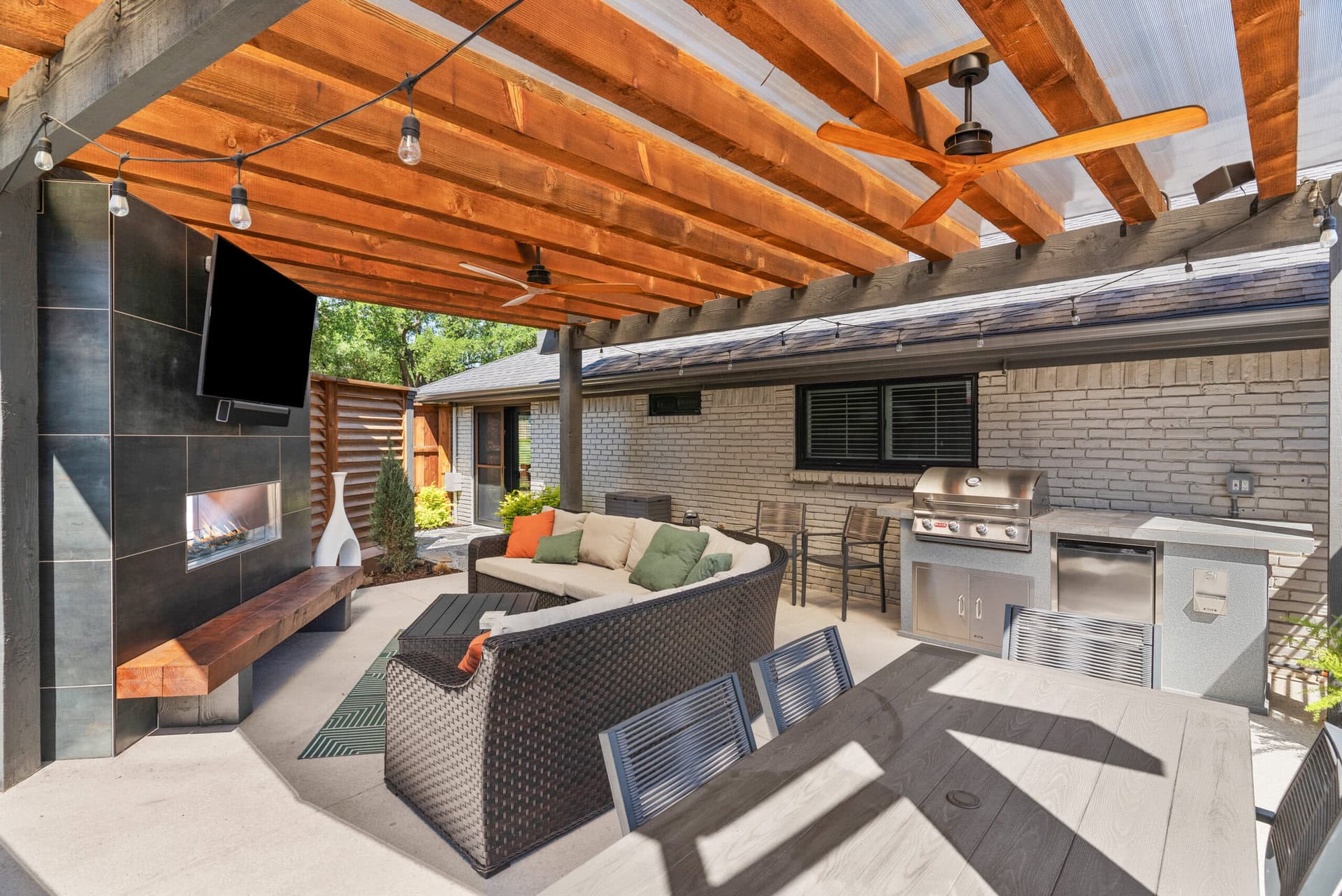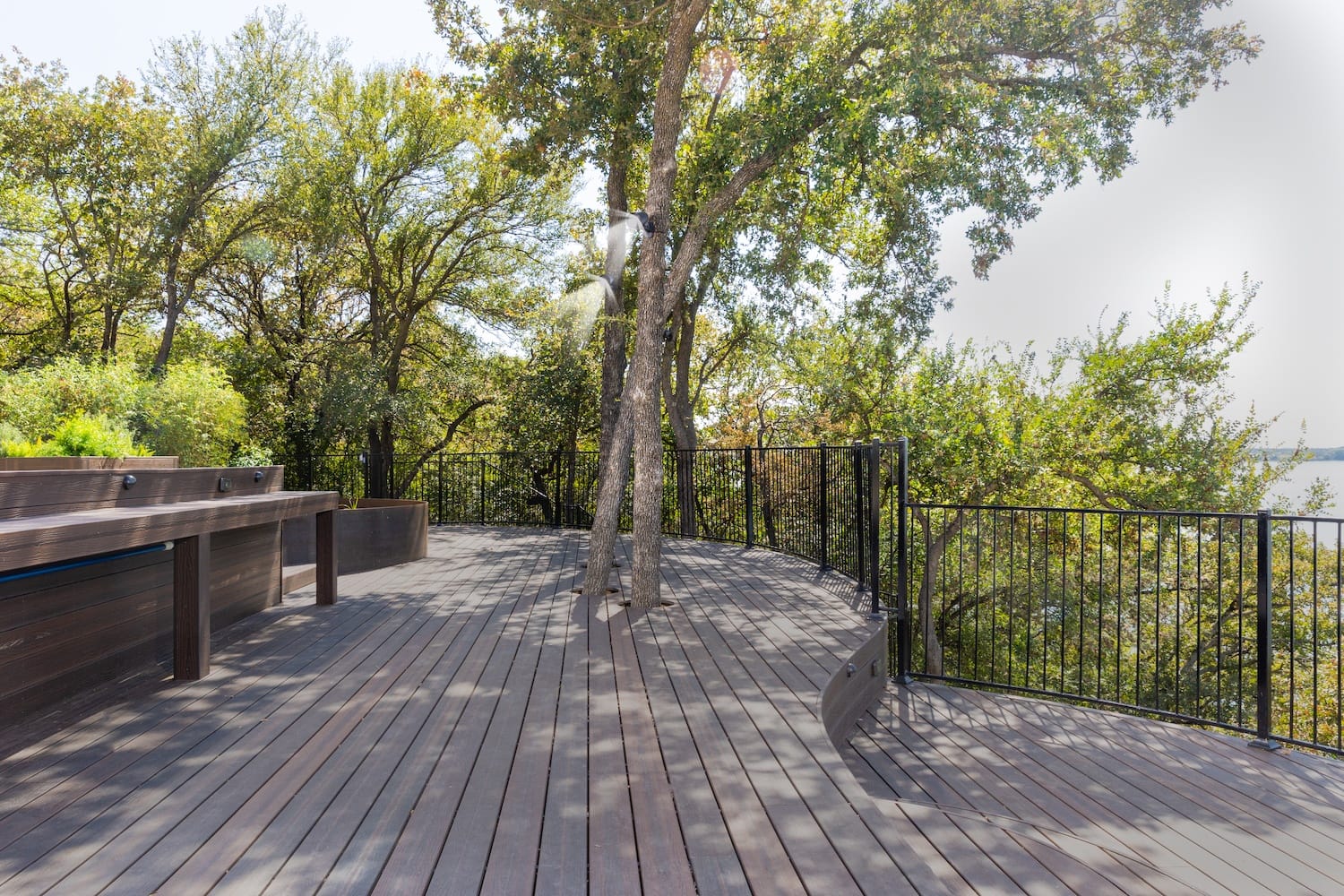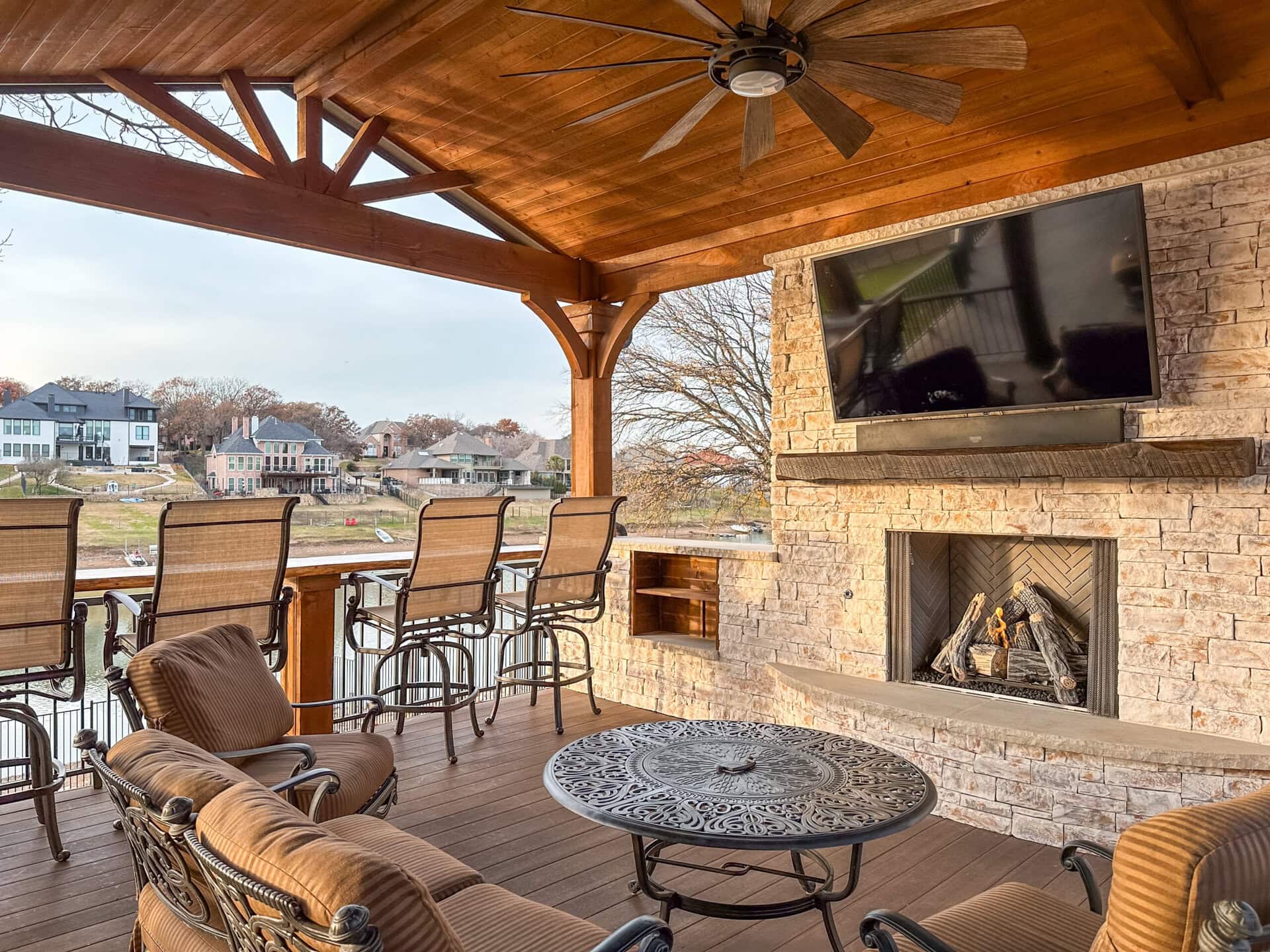Is It Time to Repair or Replace Your Wood Fence? A DFW Homeowner’s Guide to Cost-Effective Solutions.
As a homeowner in the Dallas-Fort Worth area, your wood fence serves as both a functional boundary and a design feature that enhances your property’s aesthetic appeal. However, extreme weather conditions, regular wear, and improper installation can lead to structural issues, raising the question: Should you opt for fence repair or a full replacement?
Making the right choice depends on factors like the extent of damage, the type of fence repair needed, and the cost considerations involved. This guide will help you assess whether your fence requires minor fixes or a complete overhaul.
Table of Contents
Signs Your Wood Fence Needs Attention
Visual Indicators
Regular inspections are essential for identifying potential fence repair needs before they escalate into costly issues. Look for discoloration, which may indicate water damage, fungal growth, or improper installation. Cracks in the wood can develop due to prolonged exposure to extreme weather conditions, weakening the structural integrity of your fence. A sagging fence often suggests that the fence posts are no longer secure or that rot has set in.
Pay close attention to wooden fence posts that appear warped or have loose nails, as these signs indicate an underlying issue that could worsen over time. Addressing these common issues early can help prevent more extensive fence repair projects or the need for a full replacement.
Structural Concerns
A sturdy wood fence is essential for long-term durability. Structural concerns often arise from weakened fence posts or rails, leading to a leaning fence. Check for loose or wobbly posts, as these often indicate foundational shifts or decay from moisture damage.
Rot is a major concern, as it can quickly spread from one section to another, compromising the entire fence structure. Listen for creaks that suggest structural damage or shifting joints. Additionally, termite infestations and other insect damage can weaken the type of wood used, making it brittle and susceptible to breakage. If multiple fence posts show signs of deterioration, it may be time to consider a replacement project rather than ongoing repairs.
Functional Issues
Functional problems with a wood fence can impact security and privacy. Gates that stick or fail to close properly often indicate misalignment, warped wood, or failing hardware. These issues not only affect accessibility but also pose safety concerns, particularly for households with children or pets.
Another issue to watch for is gaps between the ground and the fence, which can be caused by soil erosion, shifting foundations, or improper installation. These gaps weaken the fence’s ability to serve as a barrier, making it less effective for security and privacy. Also, be wary of sections that rattle or move excessively in high winds, as this indicates loose connections that could lead to more severe failures during storms or extreme weather conditions.
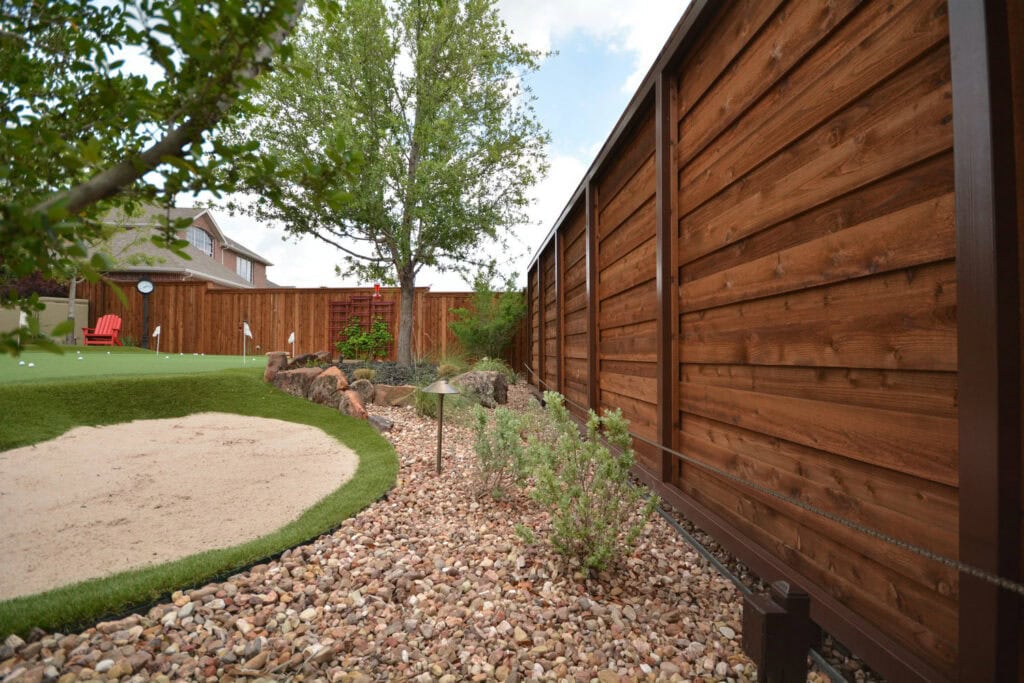
When to Repair Your Wood Fence
Minor Damage
When dealing with minor fence damage, repairs can often restore your wood fence without the need for a full replacement. Small issues, such as broken fence boards or minor cracks, can be efficiently repaired with straightforward fixes. Addressing these problems promptly prevents them from escalating into more serious structural concerns that could compromise the fence’s stability.
Localized rot or pest damage can often be resolved by replacing affected sections and applying protective wood treatments to prevent future deterioration. Regular fence maintenance ensures that these minor damages don’t turn into costly repairs.
By focusing on timely fence repairs, you help maintain both the appearance and functionality of your property’s boundary, ensuring it remains a secure and visually appealing feature for years to come.
Simple Hardware Issues
Simple fence hardware issues, such as loose hinges, rusty screws, or misaligned latches, can often be fixed with quick, cost-effective repairs. Over time, weather exposure can cause metal components to corrode, leading to gate malfunctions and other functional problems.
Misaligned fence latches can be adjusted or replaced to enhance security and ease of use. Regular lubrication of hinges prevents rust buildup, ensuring smooth operation and extending the life of your fence hardware. Ignoring these small issues can lead to bigger problems, potentially affecting the structural integrity of your fence.
By addressing minor hardware repairs promptly, you help maintain the fence’s strength and reliability, improving both security and curb appeal. This proactive approach not only extends the life of your wood fence but also protects your investment.
When to Replace Your Wood Fence
Extensive Damage
When a wood fence suffers extensive damage, replacement often becomes the most practical and cost-effective solution. Signs of severe deterioration include widespread rot, structural instability, and pest infestations affecting large sections of the fence.
If damage is pervasive, repair costs can quickly add up, making a full fence replacement a more economical long-term option. A leaning fence or one with multiple broken posts may indicate foundational issues that cannot be resolved with simple repairs.
By opting for a fence replacement, you invest in the security, durability, and curb appeal of your property, ensuring your boundary remains strong, stable, and visually appealing for years to come.
Structural Failure
Structural failure in a wood fence indicates that replacement is necessary. This occurs when the fence can no longer perform its essential functions due to compromised integrity. Common signs include significant leaning, broken or missing posts, and widespread cracking. Such failures often result from prolonged exposure to harsh weather conditions and weakening materials and joints.
If the fence can no longer withstand environmental pressures, it poses safety risks and compromises the security of your property. Attempting to repair a fence with fundamental structural issues typically results in ongoing maintenance challenges and costs.
Instead, replacing the fence ensures you restore its full functionality and durability. A new installation allows you to upgrade to more resilient materials, benefiting from advancements in treatment technologies that offer enhanced protection against rot, insects, and weathering.
Age & Longevity
As wood fences age, their ability to function effectively diminishes, making replacement a necessary consideration. Typically, a wood fence lasts 15-20 years, depending on weather exposure, maintenance, and material quality.
As the fence nears this age range, signs of wear become more apparent and frequent. These signs might include warping, persistent rot, and repeated need for repairs, all indicating the wood has weakened over time. Older fences also tend to lose their visual appeal, impacting the overall aesthetics of your property.
By replacing an aging fence, homeowners can use newer materials and technologies that offer greater durability and lower maintenance requirements. This investment enhances the safety and security of the boundary and revitalizes the outdoor space’s appearance. Replacing an old fence ensures the longevity and reliability of your property’s perimeter for years to come.
Download our Repair vs Replace infographic for more information!
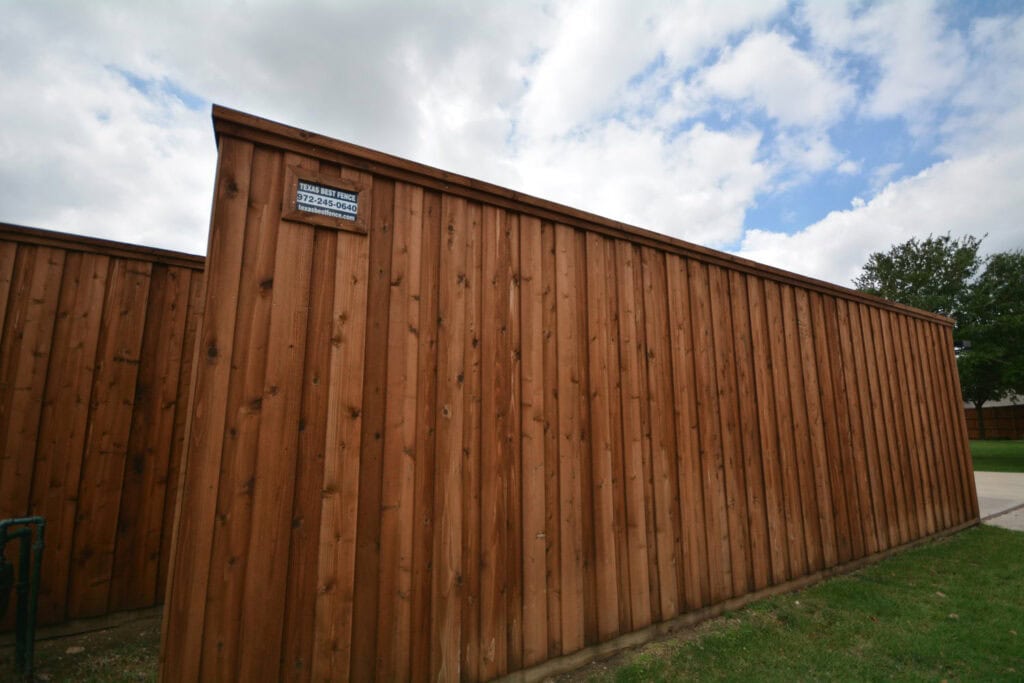
Preventative Maintenance for Longevity
Regular Inspections
Regular inspections are a vital practice in extending the lifespan of your wood fence. You can identify and address minor issues by routinely checking the fence before they escalate into major problems. Start by examining the entire fence length for signs of rot, insect damage, and weathering, paying close attention to posts and joints where deterioration often begins.
Look for visible signs of wear, such as discoloration, warping, or loose hardware. Check the posts’ stability and the wood’s condition, ensuring no significant cracks or splits. Regular inspections also allow you to assess whether protective coatings or treatments need reapplication to enhance weather resistance.
By catching potential problems early, you can perform timely repairs, helping maintain your fence’s structural integrity and aesthetics. This proactive approach ensures your wood fence remains a reliable boundary and helps prevent costly repairs or replacements down the line.
Treatment & Sealing
Treatment and sealing are crucial components of preventative maintenance for wood fences, enhancing their durability and resistance to environmental factors. Applying a high-quality sealant creates a protective barrier against moisture, preventing rot and decay. Sealing your fence every couple of years, or more frequently if you live in an area with severe weather conditions, is recommended.
In addition to sealing, treating your wood fence with preservatives can protect it from insect damage and fungal growth. These treatments penetrate the wood, offering long-lasting protection. Combining regular treatment and sealing will bolster your fence’s ability to withstand the elements, significantly extending its lifespan.
This proactive care not only preserves the fence’s structural integrity but also maintains its aesthetic appeal, ensuring your fence continues to enhance the value and beauty of your property.
Proactive Repairs
Engaging in proactive repairs is an essential strategy for maintaining the longevity of your wood fence. Addressing minor issues as they arise prevents them from developing into more significant, costly problems. Begin by monitoring your fence for any signs of damage, such as split boards, loose nails, or wobbly posts, and take immediate action to fix these issues.
Replacing damaged boards or securing loose components promptly can prevent further deterioration and maintain the fence’s structural integrity. Regularly tightening screws and nails helps keep the fence stable and secure, especially after adverse weather conditions. This approach enhances the fence’s durability and preserves its aesthetic value, ensuring it remains a solid and attractive feature of your property.
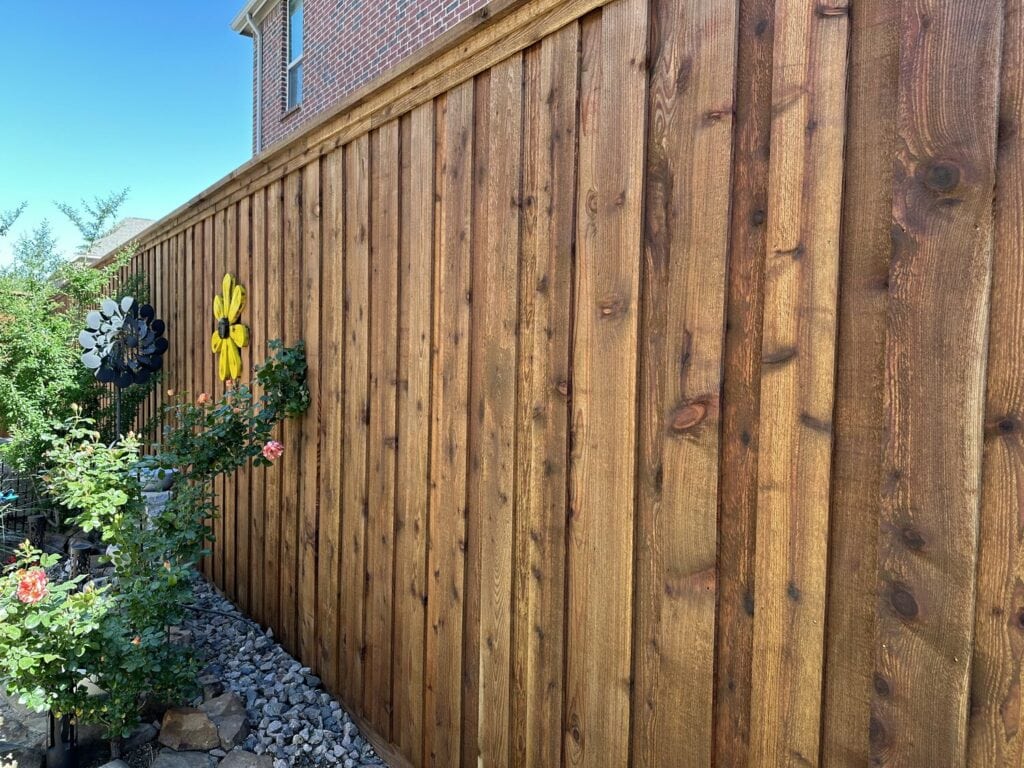
Choosing the Right Contractor
Importance of Quality Materials
Selecting a contractor who prioritizes high-quality materials is essential when installing or repairing a wood fence. The quality of materials directly affects the fence’s durability, longevity, and appearance. Inferior wood is more prone to rot, warping, and insect damage, leading to frequent repairs or early replacement. A contractor committed to using premium materials ensures your fence can withstand harsh weather conditions and resist environmental damage over time. This not only enhances structural integrity but also reduces maintenance costs and increases property value.
When evaluating contractors, ask about the types of wood and treatments they use, as well as their sourcing practices. Opt for professionals who offer sustainably sourced, pressure-treated, or naturally durable woods like cedar or redwood.
By prioritizing quality materials, you ensure your fence remains a reliable, long-lasting barrier, seamlessly blending functionality and aesthetic appeal while protecting your investment.
Still not sure if how to pick the best wood material for your fence? Read our article here.
Evaluating Contractor Expertise
Evaluating a contractor’s expertise is critical to ensuring your wood fence project is completed precisely and professionally. Begin by reviewing their portfolio of past projects, which provides insight into their craftsmanship and style. Look for evidence of their ability to handle various types of wood and complex installations. Experience in the fencing industry strongly indicates a contractor’s reliability and skill. Ask for references or read reviews from previous clients to gauge their satisfaction with the contractor’s work and customer service.
Verify that the contractor holds necessary licenses and insurance for your state, protecting you from project liabilities. Inquire about their process for assessing and addressing potential issues, as this reflects their problem-solving capabilities and attention to detail. By thoroughly evaluating a contractor’s expertise, you ensure that your wood fence will be constructed or repaired to high standards, offering durability and aesthetic value to your property for years to come.
Conclusion
Maintaining the integrity and functionality of your wood fence requires timely repairs, proper maintenance, or a full replacement when necessary. By recognizing the signs of damage, understanding the best course of action, and prioritizing preventative care, you can keep your fence in optimal condition.
Choosing the right contractor—one who uses quality materials and has proven expertise—ensures your fence remains strong, secure, and visually appealing for years. Whether you need minor repairs or a complete replacement, a well-maintained fence enhances your property’s charm, security, and overall value.
By staying proactive and informed, you protect your investment and maintain an outdoor space that is both functional and beautiful. If you’re experiencing fence issues or considering a replacement, consult a trusted contractor to explore the best solutions for your needs.
Request an Estimate Today
A well-maintained wood fence enhances your property’s security, privacy, and curb appeal. Whether you need minor repairs, a full replacement, or expert guidance on the best materials and design, a trusted contractor can help bring your vision to life. Don’t wait until small issues become costly problems—reach out today to request an estimate and take the next step toward a durable, beautiful fence that complements your home.
Recent Posts
Top 5 Outdoor Living Space Ideas for 2026 in North Texas
Composite Deck Care: Your Texas Winter Maintenance Guide
How to Get Your Outdoor Living Space Holiday-Ready in Dallas, TX
Fireplaces vs. Fire Pits: The Ultimate Guide to Outdoor Fire Features
Categories
Request an Estimate Today
and their uses, you can create a concept that works for your
family. Keep in mind the purpose of the structure, whether natural
light in your home is a factor, and where you want the focal point
of your backyard to be. Once your gears get turning, reach out to
request an estimate on your concept.


